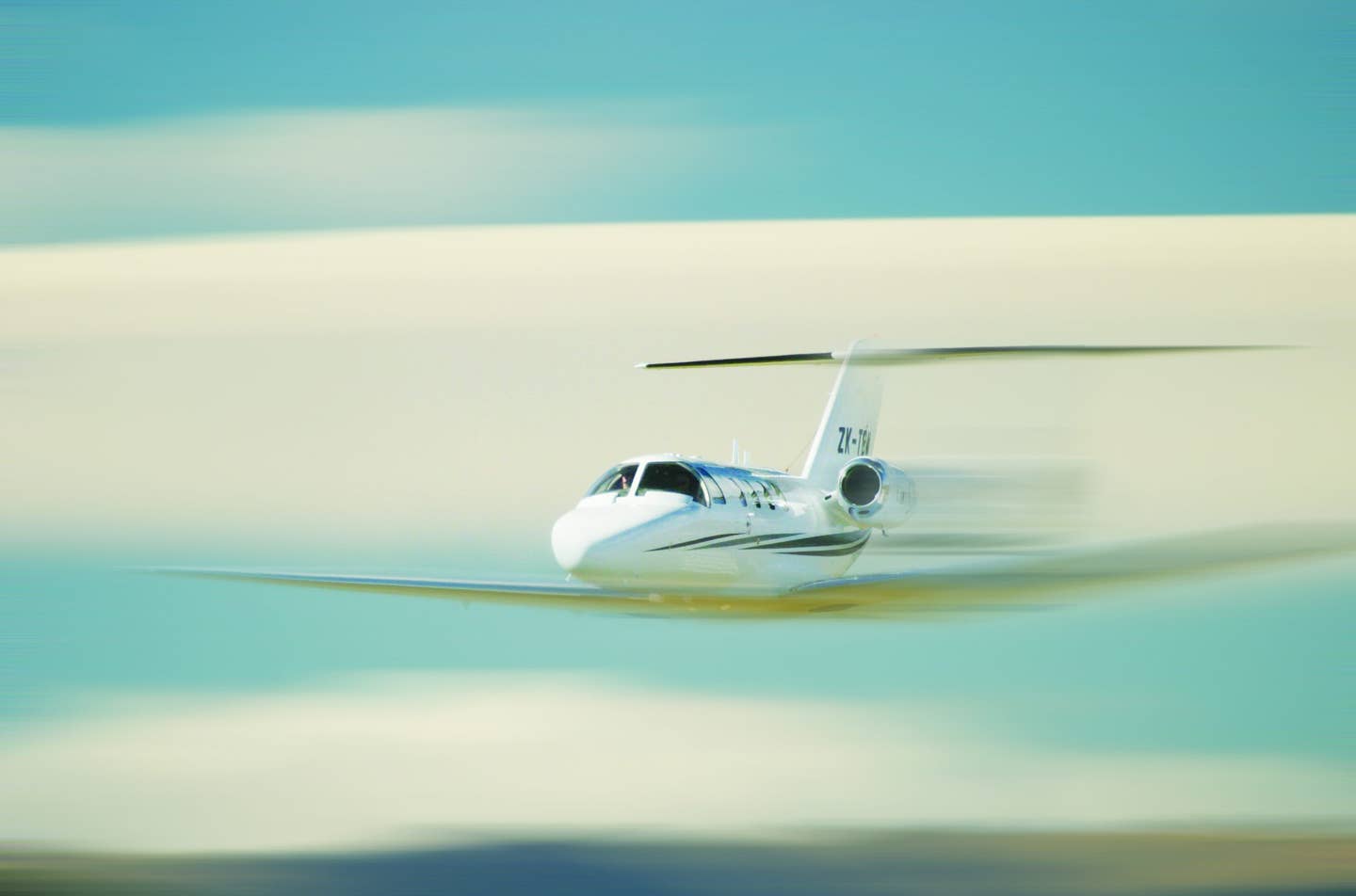
Do you know the specifics on aircraft speed limits? Alamy
Speed Limits:
- In the United States — Mach 1
- 10,000 feet msl or above — Unrestricted (but not more than Mach 1)
- Below 10,000 feet msl — 250 kias
- Class B airspace — Unrestricted at or above 10,000 feet msl, 250 kias below 10,000 feet msl
- Beneath Class B or in VFR corridor through Class B — 200 kias
- Procedure turn — 200 kias
- Class C or D airspace (at or below 2,500 feet agl within 4 nm of the primary airport) — 200 kias (unless a higher speed is specifically approved by ATC)
- Class E or G airport traffic pattern — 200 kias (recommended)
91.117(d) — If the minimum safe airspeed for any particular operation is greater than the maximum speed prescribed in this section, the aircraft may be operated at that minimum speed. Note: There is no requirement to advise ATC when exceeding a speed for this reason.
Speed Restriction/Adjustment:
(AIM 4-4-12)
1. If a controller issues a speed restriction while vectoring you, it continues to apply with an altitude change.
2. An approach clearance cancels any previously assigned speed adjustment (however, the controller would not anticipate a large speed increase when close to the runway). Pilots are expected to make their own speed adjustments to complete the approach unless the adjustments are restated. Speed adjustments should not be assigned inside the final approach fix on final or a point 5 miles from the runway, whichever is closer to the runway.
3. It is the pilot's responsibility and prerogative to refuse a speed adjustment that he or she considers excessive or contrary to the aircraft's operating limitations with a comfortable margin for safety.
Speed Limit in Class B Airspace:
(FAR 91.1, 91.117, 91.703, AIM 4-4-12)
1. Below 10,000 feet msl: 250 kias (or 200 kias below the airspace layers or in a VFR corridor). Speed of 250 knots must not be exceeded, even if you are told to "maintain best forward speed."
2. "Maintain maximum (or best) forward speed" means the maximum or best forward legal speed. ATC does not have the authority to lift the 250 kias below 10,000 feet speed restriction [91.117(a)]. You cannot be cleared to violate a regulation, and you cannot accept such a clearance.
3. At 10,000 feet msl and above in Class B airspace, you can go as fast as you want (below Mach 1, of course) unless issued a speed restriction by ATC.
4. If a controller assigns a speed above 250 knots while at or above 10,000 feet msl and then later issues a decent below 10,000 feet msl, it is understood that you must slow to 250 knots before descending below 10,000 feet.
5. There was a test program that took place at Houston International (IAH) that sought to delete the 250 kias below 10,000 feet restriction for departures only, and only if authorized by ATC. The phraseology was "no speed limit" or "increase speed to (number) knots" or "delete the 250 knot restriction." This program was canceled in January 2004. Currently, a controller does not have the authority to authorize a speed above 250 knots below 10,000 feet for civil aircraft anywhere in the United States.
Note: The 250 kias below 10,000 feet msl speed restriction does not apply to aircraft operating beyond 12 nm from the coastline of the United States. However, one must consider the potentially catastrophic damage from a high-speed bird strike.
Speed in Class C, D, E and G Airport Areas:
(FAR 91.117, AIM 3-2-5, AC 90-66A)
1. Unless otherwise authorized or required by ATC, no aircraft may operate faster than 200 kias at or below 2,500 feet agl within 4 nm of the primary airport of Class C or D airspace.
2. "Maintain best forward speed" is not an authorization to exceed the 200-knot restriction in Class C or D airspace.
3. Any speed deviation above 200 knots must be specifically assigned by ATC (e.g., "maintain 220 knots").
4. While operating in the traffic pattern at an airport without an operating control tower, it is recommended that the pilot maintain an airspeed of no more than 200 kias. In any case, the speed should be adjusted, when practicable, so that it is compatible with the speed of other airplanes in the pattern.
Remember: Never let an airplane take you someplace your brain didn't get to five minutes earlier.
Maximum Holding Pattern Speeds:
(AIM 5-3-8, FAA-H-8083-15, 8083-16)
| Altitude (feet msl) | Airspeed (kias) |
|---|---|
| 6,000 and below | 200 |
| 6,001 through 14,000 | 230 |
| 14,001 and above | 265 |
NOTE: A maximum holding speed other than standard may be depicted either inside or just outside the charted racetrack symbol.

Subscribe to Our Newsletter
Get the latest FLYING stories delivered directly to your inbox






